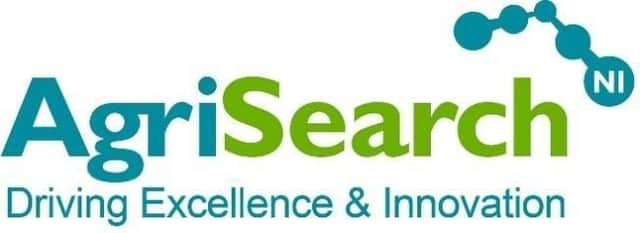Unlocking the potential of sheep genetics in NI


The webinar, led by Edward Adamson, Chair of the AgriSearch Sheep Advisory Committee, consisted of a series of presentations from Samuel Boon (Signet Breeding; AHDB), Dr Aurélie Aubry (AFBI), Kevin McDermott (Sheep Ireland) and Dr Eileen McCloskey (CAFRE), followed by a panel discussion and Q&A session. A recording of the webinar can be viewed on the AgriSearch website and YouTube channel.
The first presentation from Samuel Boon (Signet Breeding; AHDB) highlighted the financial benefit of selecting rams using EBVs. Doing so can yield a benefit of over £3.50 per lamb, which during the three working years of a ram’s life, assuming sixty ewes per ram at 1.4 lambs per ewe sold, would be worth an extra £900/ram.
Advertisement
Advertisement
In total Signet’s database and breeding values are estimated to be worth £10.7 million to the UK sheep industry annually. This indicates the “power of genetics” within the sheep industry with genetics providing a cost effective way to improve performance of a flock both permanently and cumulatively.
As well as improving individual flocks, the “power of genetics” also has the ability to improve the breed. The benefits for the sheep industry are clear but the challenges in Northern Ireland particularly for commercial flocks were not ignored. Only a small group of NI breeders currently use genetic recording with much room for growth.
Next to present was Dr Aurélie Aubry (AFBI) on the results of the RamCompare NI project and its links to wider work within the sector. RamCompare NI aimed to evaluate the effect of sire EBV for muscle index on performance, carcass characteristics and meat quality of the progeny. The research was carried out by artificially inseminating ewes with sires that were either high or low EBV for muscle index. Measurements were then taken of the lambs, such as the lamb live weight from birth to slaughter, ultrasound scanning was carried out at 14 weeks for muscle depth and fat depth, and a CT scan was carried out at 16 weeks on a group of lambs to get the relative proportion of muscle, fat, and bone of the lambs.
The lambs had a target slaughter live weight of 45kg, and the carcasses were then assessed for carcass weight, conformation and fat classification, saleable meat yield proportion of the carcass and instrumental meat quality. The results showed that through the use of high EBV rams there is the potential to improve lamb performance, reduce days to slaughter, increase muscle weight and reduce fat weight.
Advertisement
Advertisement
Despite the research clearly showing the benefit of EBVs, this presentation again highlighted the low uptake and use of recorded rams in Northern Ireland and the low rate of genetic progress as a result. This is despite the AbacusBio report stating the potential benefit to the Northern Ireland Sheep sector could be in the region of £500K per year. Dr Aurélie Aubry concluded by stating that it also important to recognise the non-monetary benefits that using rams with high EBVs for muscle index can have, such as the reduction in carbon footprint associated with fewer days to slaughter.
Kevin McDermott (Sheep Ireland) addressed the potential for performance recording in Northern Ireland by detailing the actions Sheep Ireland have taken in recent years to successfully increase uptake in their breeding programmes.
Participation levels have steadily increased since 2009 which in turn has allowed Sheep Ireland to gather vast amount of genetic data, with 50,000 sheep genotyped by 2020. The data collected allows for genetic linkage between farms, can indicate novel traits and can be used to prove new maternal bloodlines.
Whilst the Central Progeny Test provides valuable commercial data on the top Pedigree Stock Rams, there has been increasing interest from commercial flocks with many now starting to performance record.
Advertisement
Advertisement
The final presentation given by Dr Eileen McCloskey (CAFRE) focused on the need for sustainable sheep systems driven by knowledge. Eileen stressed the importance of efficiency in a flock and how this then leads to improved economic and environmental sustainability.
The performance and efficiency of a flock can be influenced by the management of environmental factors, but without the genetic potential of the flock being known, efficiency and performance cannot significantly change.
From a practical standpoint, when selecting a ram you are looking for traits such as fertility, good health attributes and fast-growing lambs. This information cannot be solely gained from viewing the animal.
Whilst stockmanship and husbandry should not be overlooked, using EBVs and genetic recording can lead to a more informed decision making process.
Advertisement
Advertisement
Another important factor in performance and profit is the maternal ability of the ewes in the flock. Simple data can be collected on farm of ewe traits such as weight, milking ability, health, and lamb survival, all of which can give an insight into the genetic potential of the maternal lines within a flock.
Dr Eileen McCloskey concluded that by understanding genetic information and using it to make informed decisions on farm, permanent and cumulative improvements in performance, efficiency and ultimately sustainability can be make.
The presentations were followed by a panel discussion and Q&A session.
From the interest shown and the questions asked it is clear there is significant appetite for improved performance recording in Northern Ireland, it is an opportunity the sector can no longer afford to ignore.